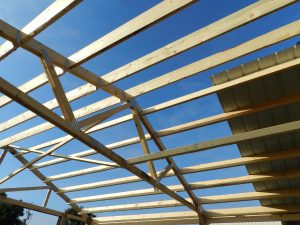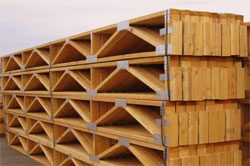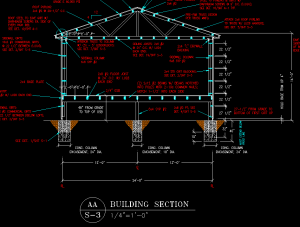 If you’re thinking about building a pole barn home (or ‘barndominium’), you no doubt already know that construction and labor costs for this type of residence can be significantly lower than the cost of building a traditional house. However, you may be wondering what your monthly utility bills will look like once you move in. Can pole buildings be energy-efficient, or will you end up losing money trying to heat and cool your home?
If you’re thinking about building a pole barn home (or ‘barndominium’), you no doubt already know that construction and labor costs for this type of residence can be significantly lower than the cost of building a traditional house. However, you may be wondering what your monthly utility bills will look like once you move in. Can pole buildings be energy-efficient, or will you end up losing money trying to heat and cool your home?
In our years of experience at Hansen Pole Buildings, we’ve learned that pole barns can be energy efficient—as long as you install proper installation.
It’s All about the Insulation
The greatest majority of heat loss or gain is through a home’s roof, and this can be especially pronounced in pole buildings with high ceilings. To avoid sky-high utility bills, we recommend that you install a reflective radiant barrier under the roof of your pole barn. It doesn’t change the construction process for the pole building, and it can provide considerable savings over time.
At Hansen Pole, we offer A1V radiant reflective barrier. This barrier features a closed layer of air cells in between reflective aluminum facing on the exterior and white vinyl facing on the interior.
If you’re interested in learning how to install this cost-effective product, check out this previous blog post.
Don’t Forget the Roof
While the insulation you install will play a major role in determining how energy efficient your pole barn is, the roof you choose will also make a difference. Lighter color roofs are typically better in warm climates because they will reduce heat absorption, which will help prevent the building from becoming too balmy in the spring and summer.
When working with us to put together a custom pole building kit, you can get a light-colored roofing material that is Energy Star certified. To get the Energy Star stamp of approval, a roof has to maintain a reflectance of at least 15% of the sun’s energy after three years of real-world exposure testing. The higher the reflectance, the less energy it will take to cool the home below. This simple feature will reduce your monthly pole barn energy costs.
Additional Tips for an Energy-Efficient Pole Barn
In addition to choosing energy-efficient insulation and roofing, there are several other choices you can make to reduce the amount of energy your barndominium uses. For example, you can:
- Choose Energy Star-rated appliances.
- Install Energy Star-rated windows with low-e glass
- Use fluorescent light bulbs
- Have a heating and cooling professional check your home once a year to make sure you’re not wasting energy (and money)
Adding energy-efficient features to your pole barn home may add to the upfront building cost, but will save you money in the long run. For more information about residential pole buildings, visit Hansen Pole online and start planning for your new building today!









That is really great that pole barns can be energy efficient as long as you install the proper installation. My uncle has been wanting to build a pole barn, but he didn’t know if it would be efficient enough. That is good to know that he will have to take into consideration the roof and the installation, to make sure it is very efficient. Thank you for the tips!
Thank you Deb,
Insulation, and how the truss heels have to be adapted to meet energy needs is often overlooked during design phase by many people. Retro fitting can be very tricky when space is limited.
PBG
I’ve been looking for a good post frame building for my dad. I’m glad you talked about how we want to consider efficiency when we’re building! I’m going to have to make sure we hire some qualified professionals and see what we can do for a post frame building!